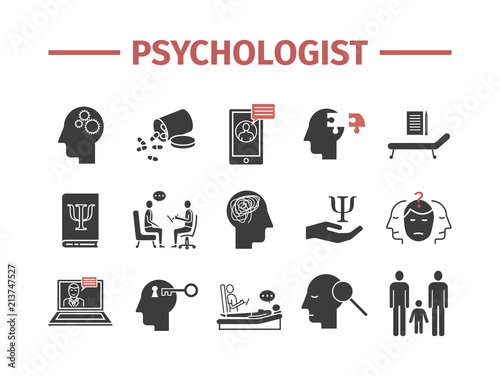How To Get Prescribed Mental Health Medication
How To Get Prescribed Mental Health Medication
Blog Article
Exactly How Do State Of Mind Stabilizers Work?
Mood stabilizers help to relax locations of the brain that are affected by bipolar disorder. These medications are most reliable when they are taken consistently.
It may take a while to discover the appropriate medication that works finest for you and your physician will certainly monitor your condition throughout therapy. This will certainly involve regular blood tests and potentially an adjustment in your prescription.
Natural chemical regulation
Natural chemicals are a team of chemicals that manage each other in healthy individuals. When levels end up being out of balance, this can bring about state of mind disorders like depression, stress and anxiety and mania. State of mind stabilizers aid to prevent these episodes by helping control the equilibrium of these chemicals in the mind. They additionally might be made use of along with antidepressants to enhance their performance.
Drugs that function as state of mind stabilizers consist of lithium, anticonvulsants and antipsychotics. Lithium is possibly the most popular of these medicines and jobs by influencing the circulation of salt through nerve and muscle cells. It is most often used to treat bipolar affective disorder, however it can likewise be practical in dealing with various other state of mind disorders. Anticonvulsants such as valproate, lamotrigine and carbamazepine are also effective state of mind maintaining drugs.
It can spend some time to find the best type of medication and dosage for each person. It's important to work with your doctor and engage in an open dialogue concerning just how the drug is benefiting you. This can be specifically valuable if you're experiencing any type of adverse effects.
Ion channel modulation
Ion channels are a significant target of state of mind stabilizers and lots of various other medications. It is now well established that they are dynamic entities that can be modulated by a selection of exterior stimulations. Furthermore, the modulation of these channels can have a variety of temporal effects. At one extreme, changes in gating dynamics might be rapid and immediate, as in the nicotinic acetylcholine receptor/channel system. At the other end of the spectrum, covalent modification by protein phosphorylation may cause adjustments in network feature that last much longer.
The field of ion channel modulation is getting in a duration of maturity. Recent studies have actually shown that transcranial focused ultrasound (US) can stimulate nerve cells by turning on mechanosensitive potassium and salt channels embedded within the cell membrane layer. This was shown by revealed channels from the two-pore domain potassium family members in Xenopus oocytes, and focused US significantly regulated the existing moving with these channels at a holding voltage of -70 mV (appropriate panel, loved one impact). The results are consistent with previous monitorings showing that antidepressants impacting Kv networks manage glia-neuron interactions to opposite depressive-like actions.
Neuroprotection
Mood stabilizers, like lithium, valproic acid (VPA), and carbamazepine, are important in the treatment of bipolar illness, which is defined by persistent episodes cbt therapy of mania and depression. These medicines have neuroprotective and anti-apoptotic residential properties that assist to prevent mobile damage, and they also boost cellular durability and plasticity in dysfunctional synapses and neural wiring.
These protective activities of state of mind stabilizers may be mediated by their restraint of GSK-3, inositol signaling, and HDAC activity. Furthermore, lasting lithium treatment protects versus glutamate excitotoxicity in cultured nerve cells-- a model for neurodegenerative problems.
Studies of the molecular and mobile impacts of mood stabilizers have actually shown that these drugs have a vast array of intracellular targets, including multiple kinases and receptors, along with epigenetic adjustments. Further study is required to figure out if mood stabilizers have neurotrophic/neuroprotective activities that are cell type or circuitry certain, and how these results may enhance the rapid-acting restorative response of these representatives. This will aid to develop brand-new, faster acting, extra efficient therapies for psychiatric illnesses.
Intracellular signaling
Cell signaling is the procedure whereby cells connect with their atmosphere and other cells. It includes a sequence of steps in which ligands connect with membrane-associated receptors and cause activation of intracellular pathways that control important downstream cellular features.
Mood stabilizers act upon intracellular signaling via the activation of serine-threonine protein kinases, resulting in the phosphorylation of substrate healthy proteins. This activates signaling waterfalls, leading to modifications in gene expression and mobile function.
Numerous state of mind stabilizers (including lithium, valproate and lamotrigine) target intracellular signaling paths by hindering particular phosphatases or turning on specific kinases. These impacts create a reduction in the task of these pathways, which brings about a reduction in the synthesis of specific chemicals that can influence the brain and cause signs and symptoms of anxiety or mania.
Some state of mind stabilizers also work by boosting the activity of the inhibitory natural chemical gamma-aminobutryic acid (GABA). This enhances the GABAergic transmission in the brain and lowers neural activity, thus generating a calming impact.